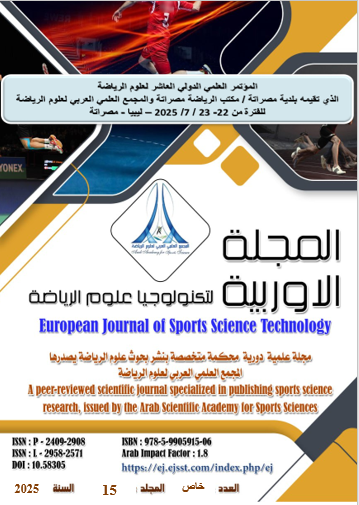A Comparative Kinematic Study of the Results of High-Level Athletes as a Training Guide for Hammer Throwers in Western Libya
DOI:
https://doi.org/10.58305/ejsst.v15iSpecial%20issue.700Keywords:
Comparative kinematic study, hammer throw, elite-level playersAbstract
Anyone following the results of world and Olympic championships in various competitions, particularly in throwing, will find their progress astonishing. This has raised questions among sports specialists and researchers about the reasons behind this tremendous leap in the numerical levels of hammer throwers. Through the work of researchers in the field of sports training in some sports clubs in Libya, many problems were observed related to issues related to the nature of players and coaches. This was in addition to the lack of a kinetic model or kinetic and mechanical profile that clarifies the most important mechanical and kinematic foundations and standards for the hammer throw distance in many clubs in western Libya. The research aims to conduct a comparative kinematic study of the results of elite players as one of the training guidelines for hammer throwers in western Libya. The research was applied to a deliberate sample of three hammer throwers during the 2024-2025 sports season. The researchers concluded that the physical characteristics related to the players' body mass index (BMI) and muscle mass, particularly the center of gravity and center of mass, contribute to a 41.92% contribution to the model for the effectiveness of skill achievement in the hammer throw. The kinematic factor influencing the numerical achievement of elite-level players is the rotational speed time, which serves as the conversion of the power gained from rotation and the transfer of force from the feet to the upper extremity at the point above the shoulder joint, accounting for 28.14% of the kinematic model in the hammer throw competition. The distance between the feet, the projectile's launch speed, and the launch angle are among the most important factors contributing to the throw distance, accounting for 29.94%.










